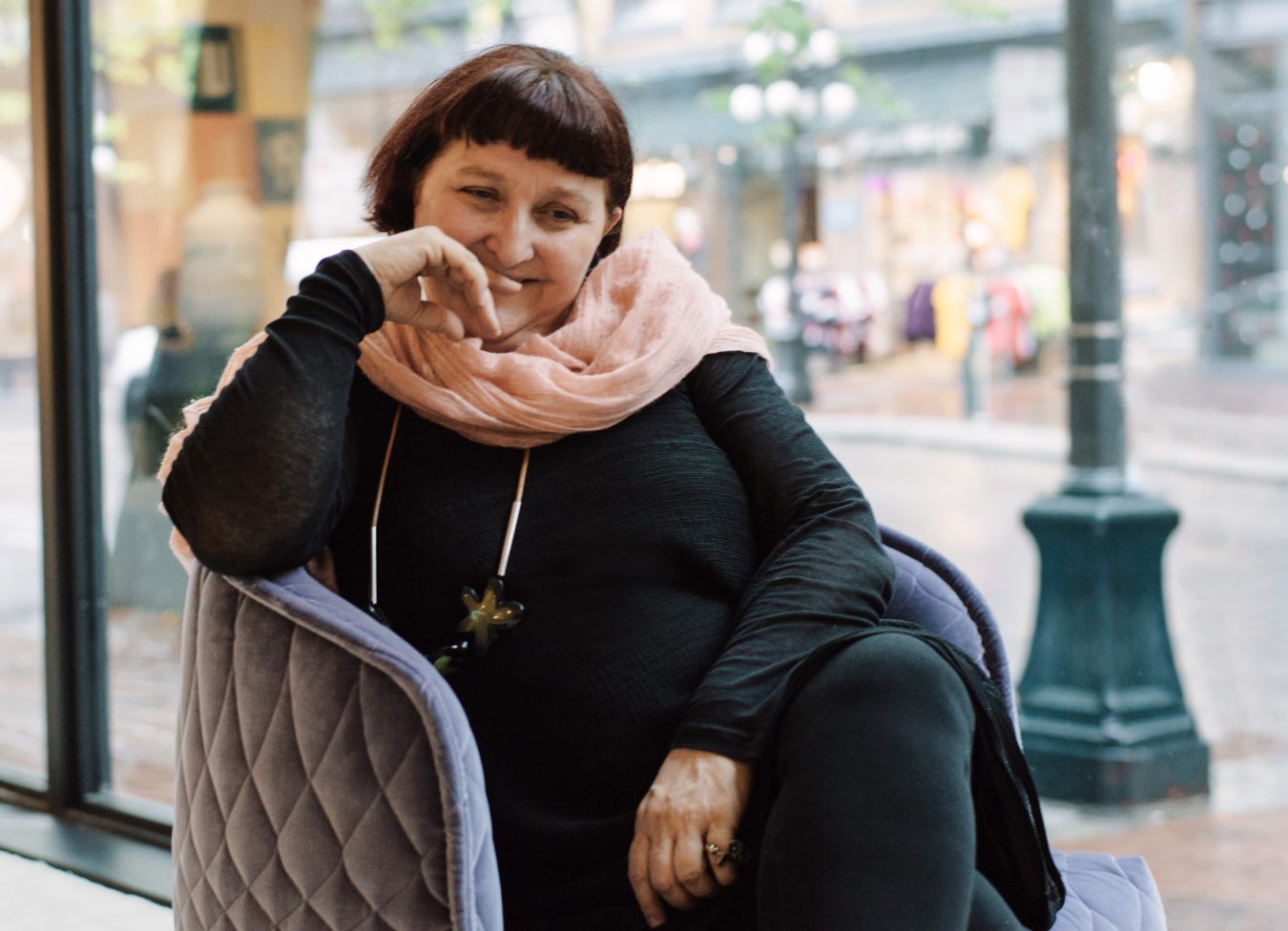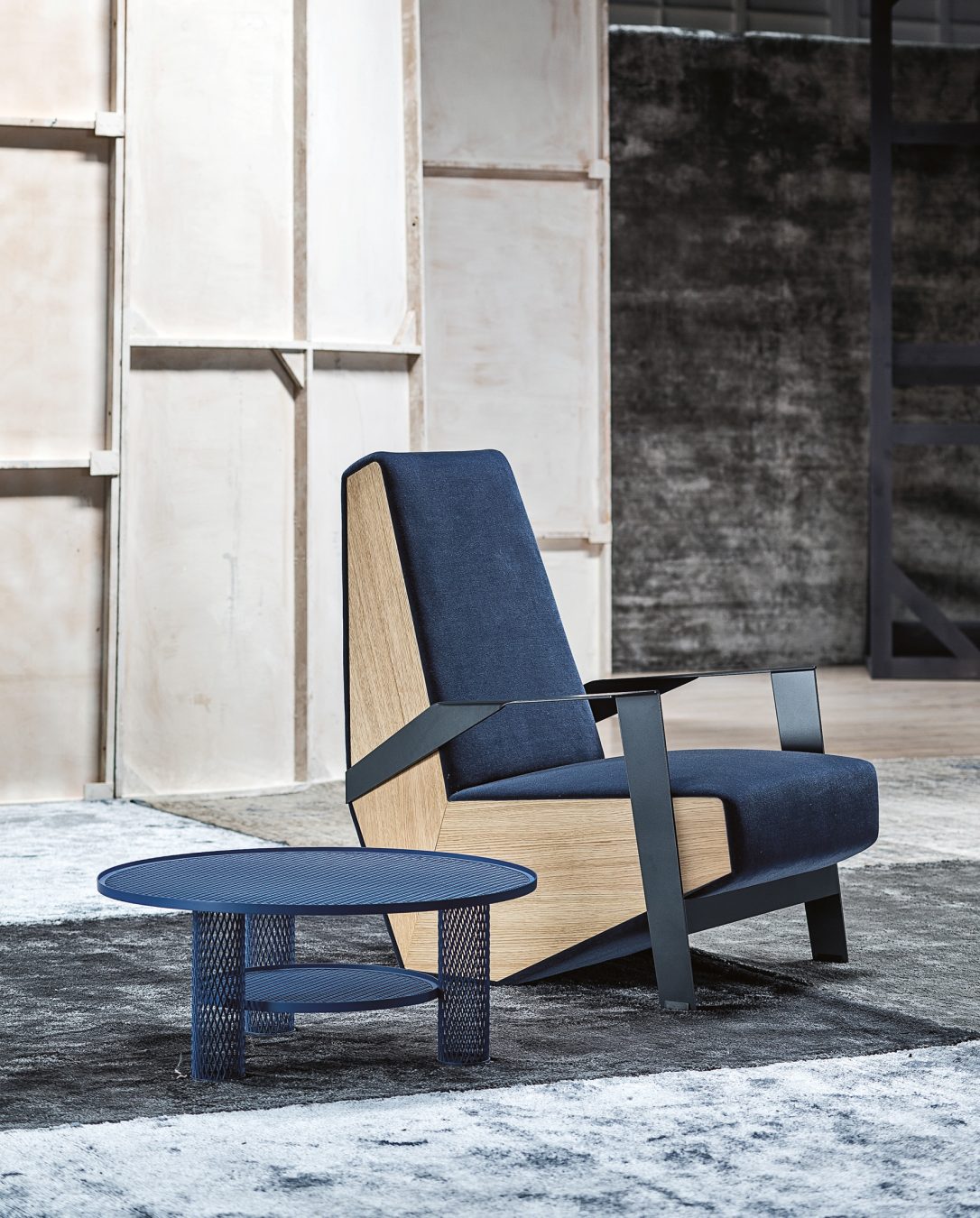It’s another rainy day in Gastown as tourists and business people hurry between awnings, trying to stay dry. But things are calm inside the showroom of Inform Interiors. Italian design maven Patrizia Moroso sits in front of the floor-to-ceiling windows, sipping a glass of water and contemplating the scene outside. She will be giving a talk later in the afternoon—Vancouver is her last stop on a North American tour—but for now, she has a moment to sit and take it all in. She relaxes in a quilted beige armchair from her family furniture company’s Redondo collection, created by acclaimed designer Patricia Urquiola—who also happens to be Moroso’s best friend.
Perhaps that’s what makes Moroso so unique. She didn’t become a leading figure in today’s industrial design landscape by being cutthroat or following current fashions. Instead, she made a point of shunning passing fads while partnering with designers she deeply admires. Moroso describes her collaborative process with metaphors of kinship and family. “It’s like having babies,” she laughs. “The company is the mother, and the designer is the father. So, depending on the fathers, you have many different children.” This notion of collaborating as co-parenting may be humorous, but it speaks to her magnanimity as art director of the company that carries her family name. Moroso makes no secret of the affection she feels for her creative partners, and so it’s only natural that she would paint them together in one vast, wonderfully mixed portrait.
Her analogy also holds for the products born of these partnerships. Despite being “fathered” by different designers, it’s Moroso’s company that brings them all together as half-siblings. Though they are diverse, they all share an important trait: in their indifference to seasonal trends, the pieces are defined by a decontextualized, anachronistic modernity that is as stylish and stunning as it is playful. While each collection offers an original take on conventional objects, they all harmonize when exhibited in the same space. “That’s the beauty of the multicultural mother,” Moroso quips. “All the brothers and sisters are able to live together in the same house.”
Moroso’s collaborators include not only virtuosos of contemporary industrial design—Tom Dixon, Marcel Wanders, Ron Arad—but noted visual artists as well. She has created furniture with Tokujin Yoshioka and Numen / For Use; more recently, she partnered with Olafur Eliasson to develop a series of modular lamps, shelves, and tables as part of an ongoing public art initiative. “I’m not interested in making art,” she explains. “I’m interested in making designs with artists. It’s fantastic because it creates hybrids—it can change our perception of objects, because artists are used to thinking differently.”
Back when she was an undergraduate at the University of Bologna, Moroso dreamed of becoming a gallery curator or museum director. She was immersed in the Italian avant-garde in those days, studying in a young and innovative academic department that counted Umberto Eco among its faculty. However, circumstances changed when a financial crisis left her family’s business on the brink of collapse. Moroso went to work for her parents’ furniture company out of a sense of obligation, and became one of the people who took it in a completely new direction. No longer would the family name be associated with safe, traditional furniture: she helped guide it to the forefront of modern design with the assistance of her friend, Massimo Iosa Ghini. He might be a hugely successful architect and designer now, but in those days, he was a 22-year-old draughtsman who drew comics for indie fanzines—and Moroso decided that the angular, futurist furniture in his cartoons could inspire something real. She was so right.
Today, Moroso still loves taking chances, following her instincts, and wilfully ignoring trends. “I’m doing what I always wanted to do,” she says. “To be in contact with these creative people… it’s a wonderful way to work.” And although her collaborators come from diverse practices, her highest priority is always the same: producing comfortable, practical furniture. “Every object has a function, and the function has to be respected,” she asserts. “Even the greatest artist is starting from the fact that a table has to be a table.”
Read more in design and architecture.










